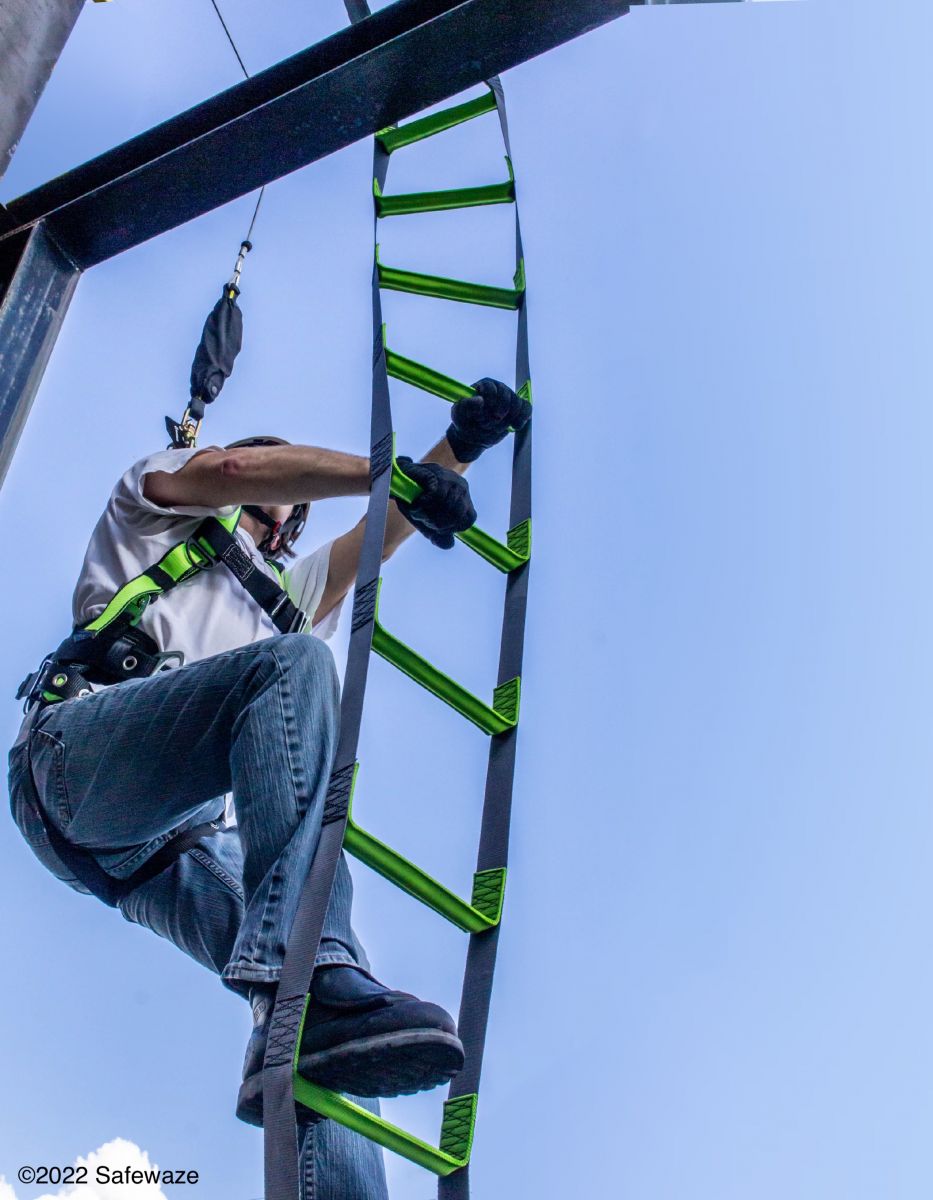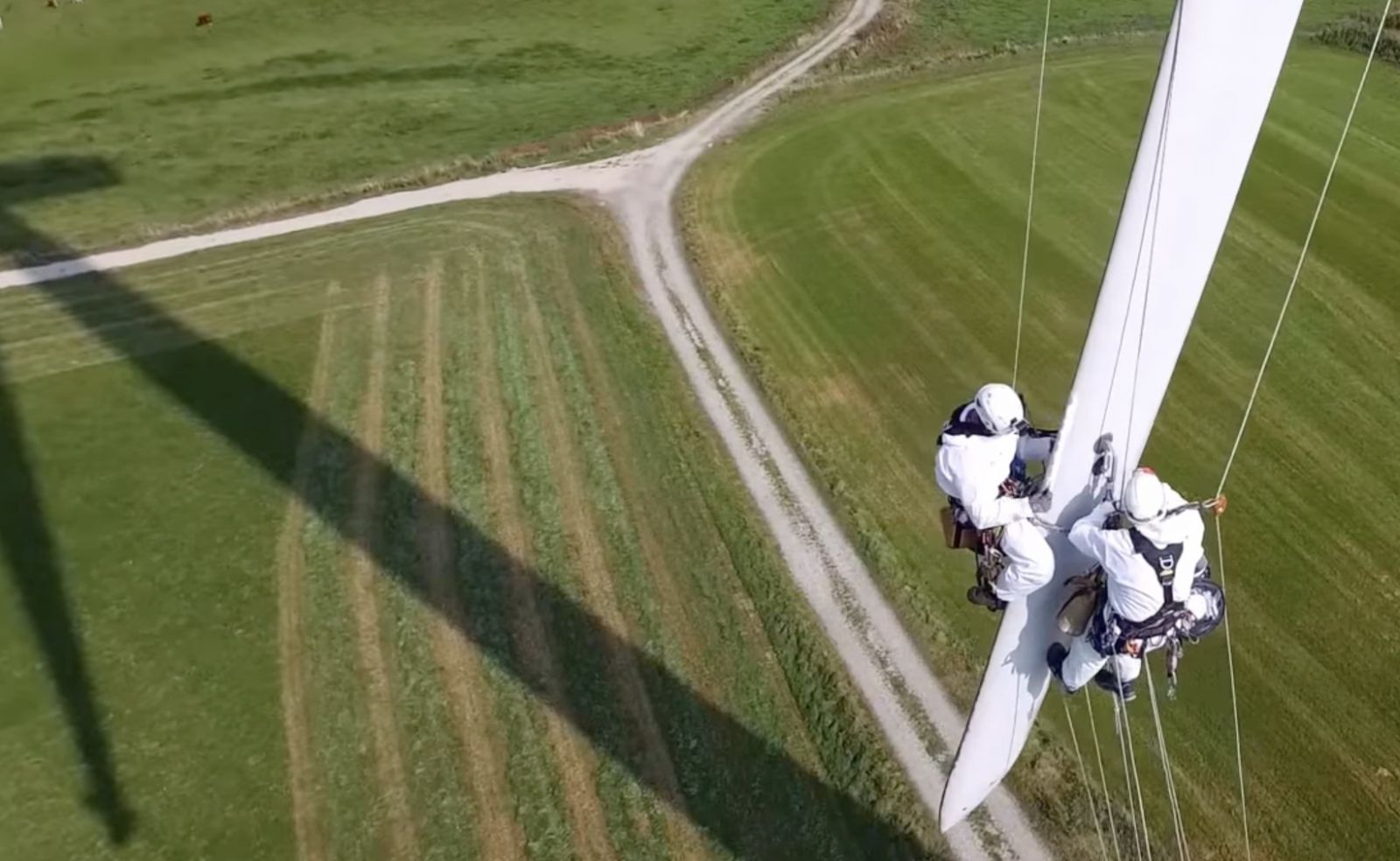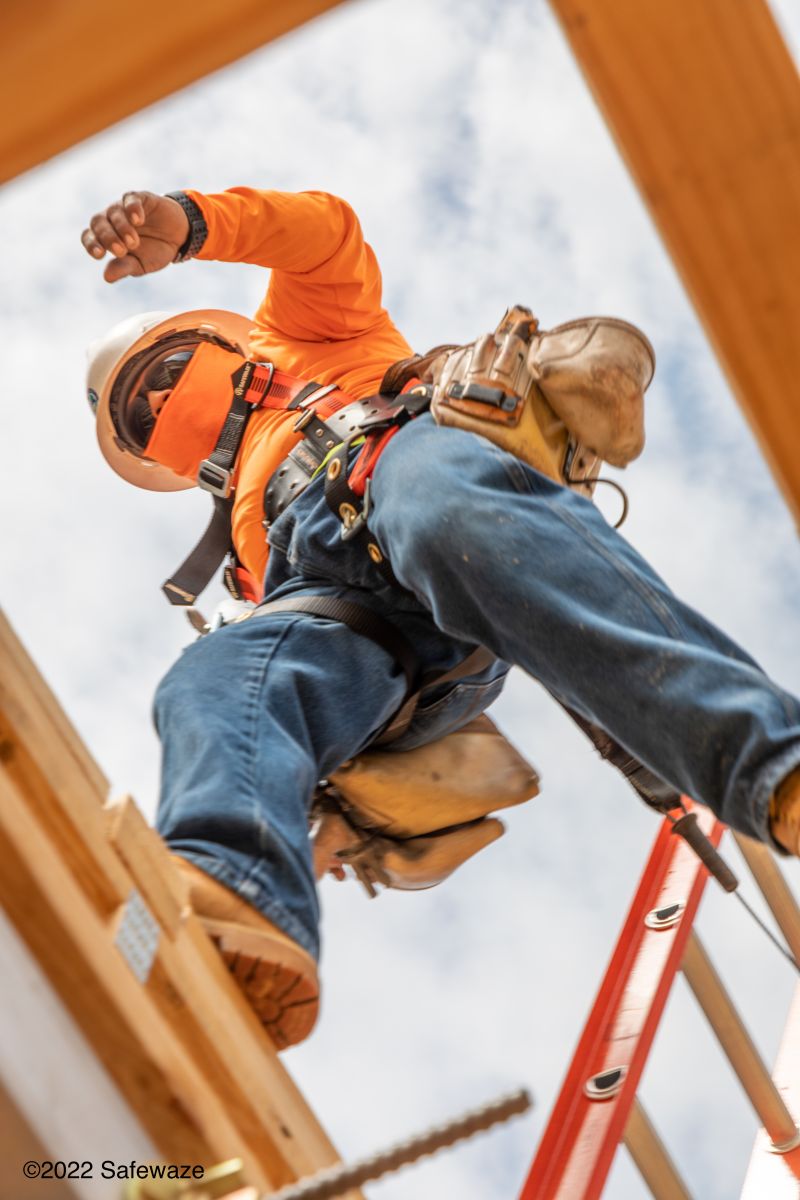Fall Protection at Extreme Height
 By law, work at height requires safety measures to adequately protect the worker. It stands to reason, then, that work at extreme height requires extreme safety measures. OSHA mandates fall protection: in general industry for heights as low as 4 feet; in construction at just 6 feet; and, for scaffolding at 10 feet. With the average height of a land-based wind turbine at nearly 300 feet – about the height of the Statue of Liberty – those in the clean energy sector may wonder, what is different about fall protection at extreme heights?
By law, work at height requires safety measures to adequately protect the worker. It stands to reason, then, that work at extreme height requires extreme safety measures. OSHA mandates fall protection: in general industry for heights as low as 4 feet; in construction at just 6 feet; and, for scaffolding at 10 feet. With the average height of a land-based wind turbine at nearly 300 feet – about the height of the Statue of Liberty – those in the clean energy sector may wonder, what is different about fall protection at extreme heights?
It may surprise you that fall protection itself is the same whether the worker will be at 4 feet or 400 feet. The standard ABCDs of fall protection, or fall protection basics, still apply:
- Anchorage, the secure point of attachment for the fall arrest system, must be able to support the necessary load in a fall event with a suitable safety factor.
- Body wear, most often a harness, safely distributes the fall forces over the worker’s body and provides an attachment point for a worker’s personal fall arrest system.
- A Connector, such as a lanyard or self-retracting lifeline, securely fastens the worker’s body wear to the anchorage and arrests the fall to allowable forces.
- Descent and rescue are an often overlooked yet critical component that ensures a fallen worker can be lowered (or raised) to safety in a prompt manner.
Risk assessment is the first step when working at any height. This is where factors unique to both the specific jobsite and to extreme heights in general can bring additional challenges. While 20 percent of fatal falls are from heights of just 10 feet or less (more people are, in fact, working at lower heights), elevated work environments can be unforgiving. Awareness of the added risks at extreme heights is key.
- Rescue will be more challenging When working at extreme heights, available resources may be scarce. Considering that it likely took additional time for the worker to get to the higher surface, the same will be true for the rescue team. It is critical to have a proven, practiced rescue plan.
- Wind velocities are more extreme By design, a wind turbine is exposed to higher winds. This can cause loss of balance, impair visibility, and lead to stiff joints and fingers.
- Sun exposure is more extreme By definition, solar panels will be located in high sun areas. Extreme heights are closer to the sun and often in open areas. This can cause hazards ranging from inconveniences such as sweating and glare to serious concerns such as a heat stroke with loss of consciousness.
- Unique structures may have challenging obstacles Wind turbine blades, heavy solar panels, and intersecting cables are just a few of the built-in hazards that workers need to navigate around, under or through.
- Energy involves electricity While not intrinsic to extreme heights, the added hazard faced in any situation with an electric element is worth a mention since many utility services operate at excess heights.

Equipment selection and inspection are crucial components in fall protection at height. Every tradesperson knows you need to have the right tool for the job and take proper care of those tools. Your personal protective equipment (PPE) is no different.
- All PPE must allow for comfort with unrestricted movement and proper ergonomics for long term health.
- Given the unique challenges of extreme height, lightweight materials are generally preferred; aluminum components can offer valuable weight reduction.
- Materials must also be weather resistant and able to withstand the elements, which is particularly important for ropes.
- Trailing rope grabs (those that follow the user smoothly) are generally preferred for better mobility and increased freedom of movement.
- Pads that breathe can reduce distracting and potentially dangerous sweating, as well as helping to prevent heat exhaustion.
- Always inspect every piece of equipment before each use. Conduct additional inspections as required by the jobsite partners and relevant laws. Use of an inspection checklist helps make the process more efficient and ensure that nothing is missed. Immediately remove any items that do not meet inspection criteria from service.
 Following the critical ABCDs is the letter “E” for education. Train early and often. Early training is especially important as 20 percent of fatal falls occur in a workers’ first two months on the job. Every worker should understand the nature of the job and the specific product usage for the required safety equipment. Workers and leaders alike must be empowered to recognize and question unsafe conditions within a culture that is committed to physical and mental safety. Leadership must understand relevant regulations and requirements that impact the jobsite.
Following the critical ABCDs is the letter “E” for education. Train early and often. Early training is especially important as 20 percent of fatal falls occur in a workers’ first two months on the job. Every worker should understand the nature of the job and the specific product usage for the required safety equipment. Workers and leaders alike must be empowered to recognize and question unsafe conditions within a culture that is committed to physical and mental safety. Leadership must understand relevant regulations and requirements that impact the jobsite.
Fall protection at every height is a balance where doing the right thing wins. It allows companies to work efficiently, meet deadlines and budgets, avoid violations and, most importantly, send every worker – whether at 400 feet, 4 feet or on the ground – home safely each night.
Stephen Hartsell is VP Sales, and Jill K. Alexander is VP Marketing at Safewaze. They are both dedicated to protecting the lives and livelihoods of workers at height.
Safewaze | safewaze.com
Author: Stephen Hartsell and Jill K. Alexander
Volume: 2022 May/June








